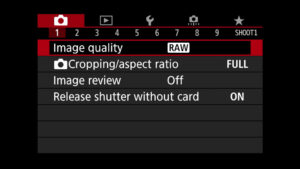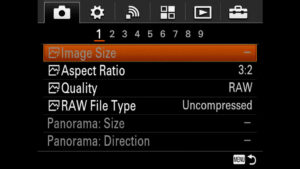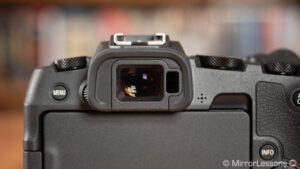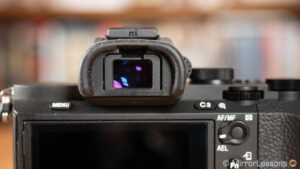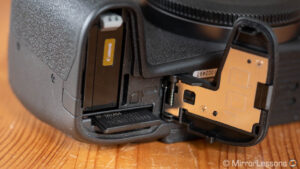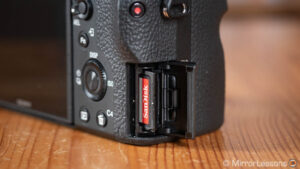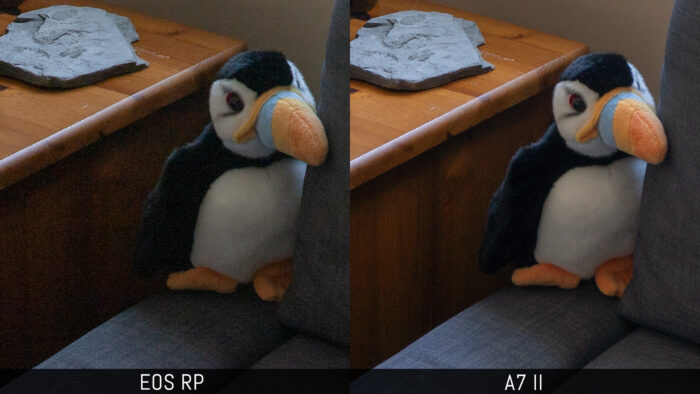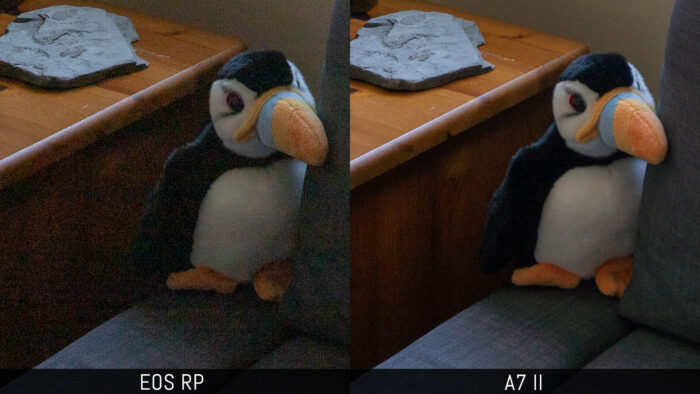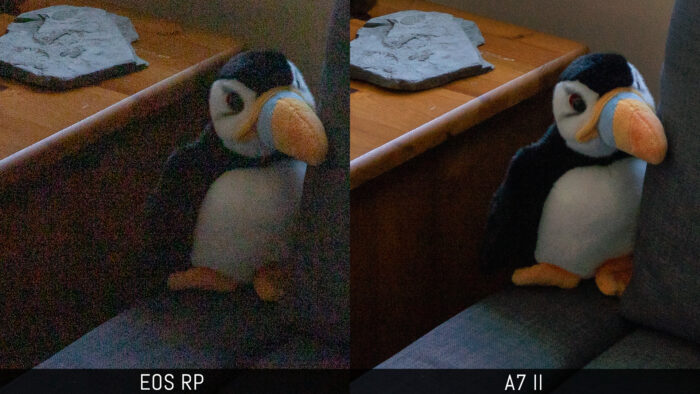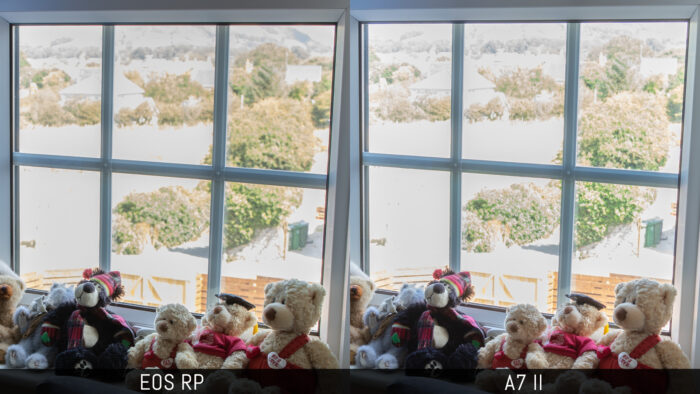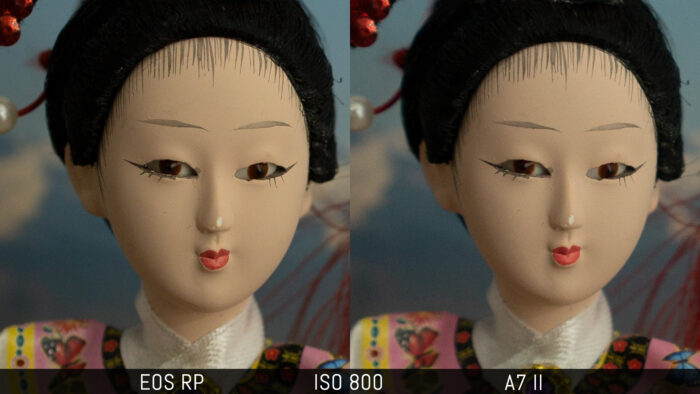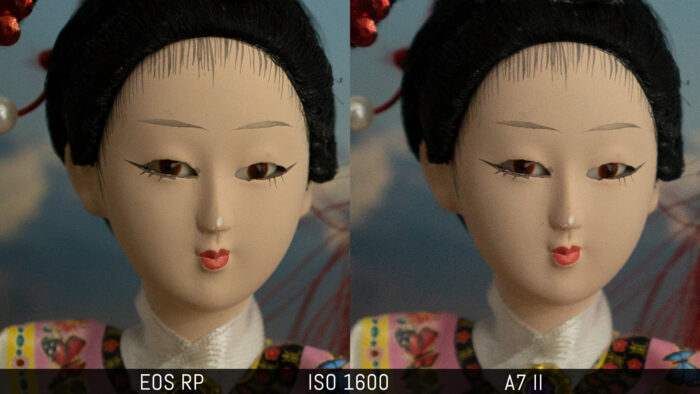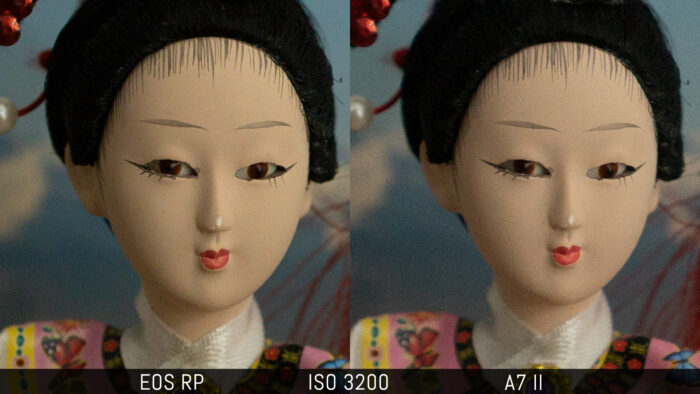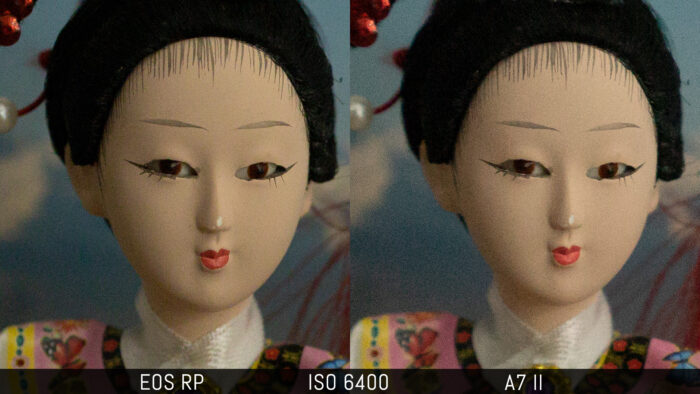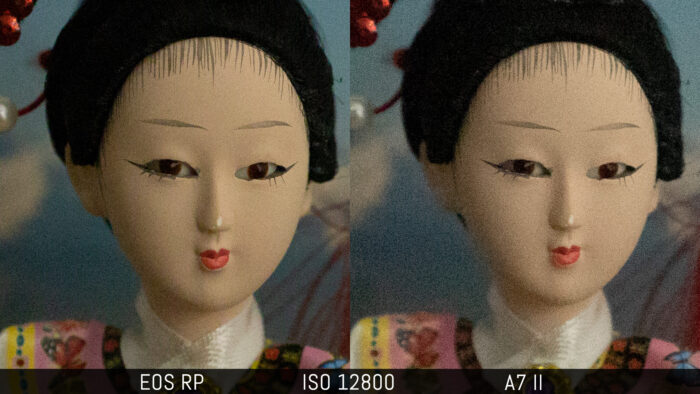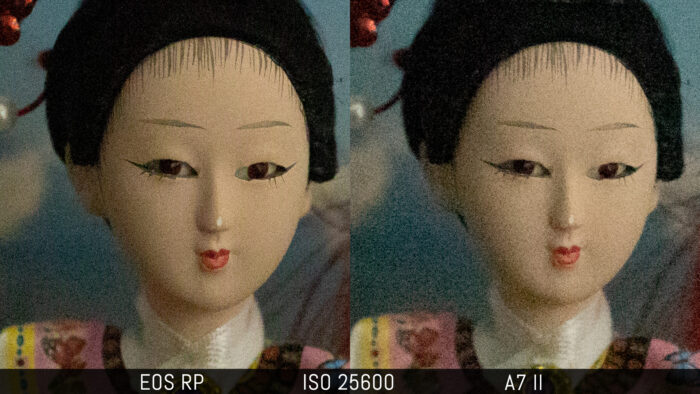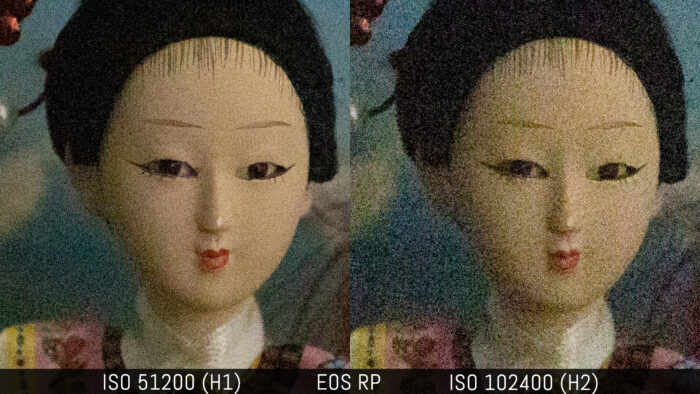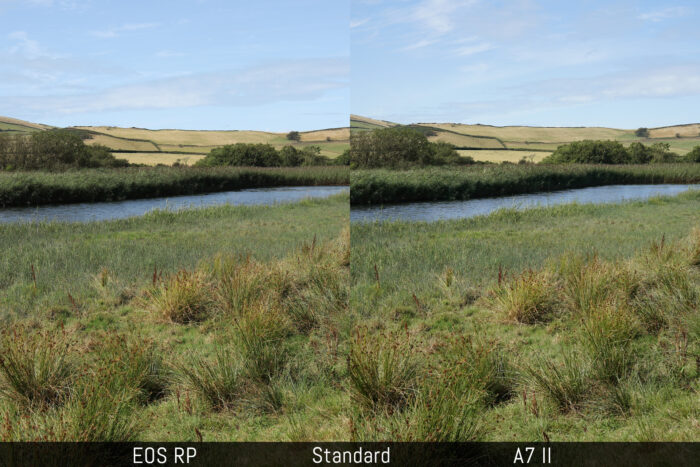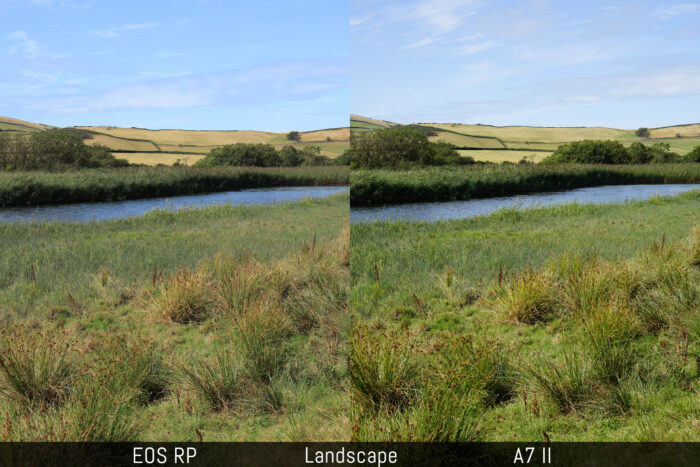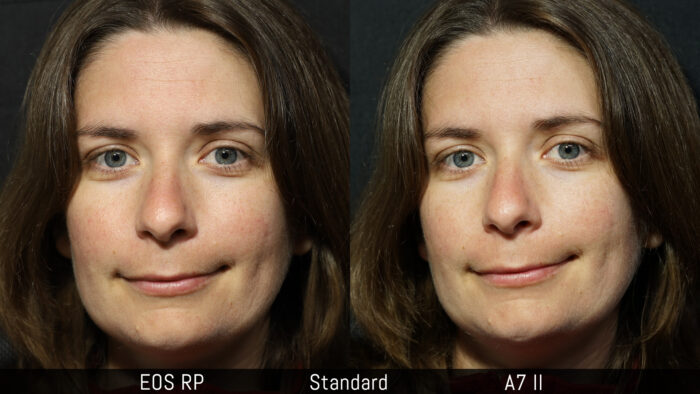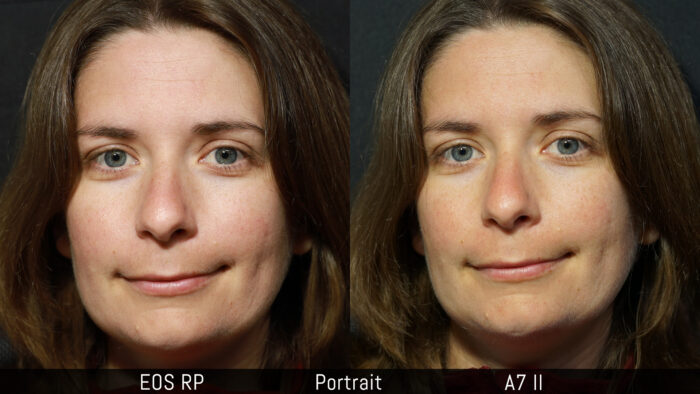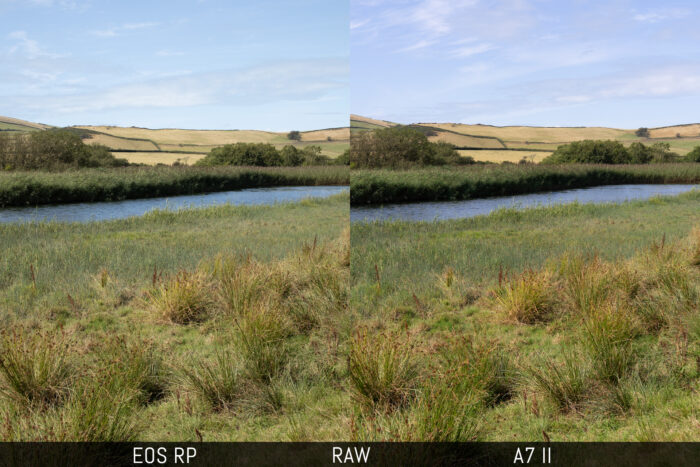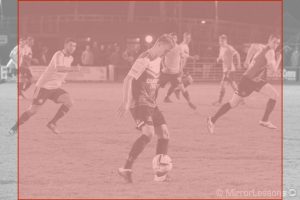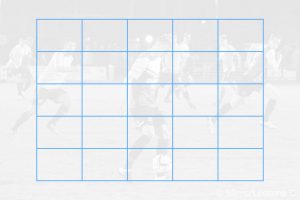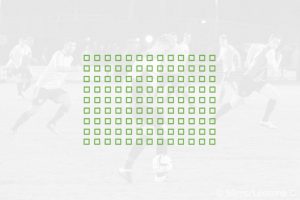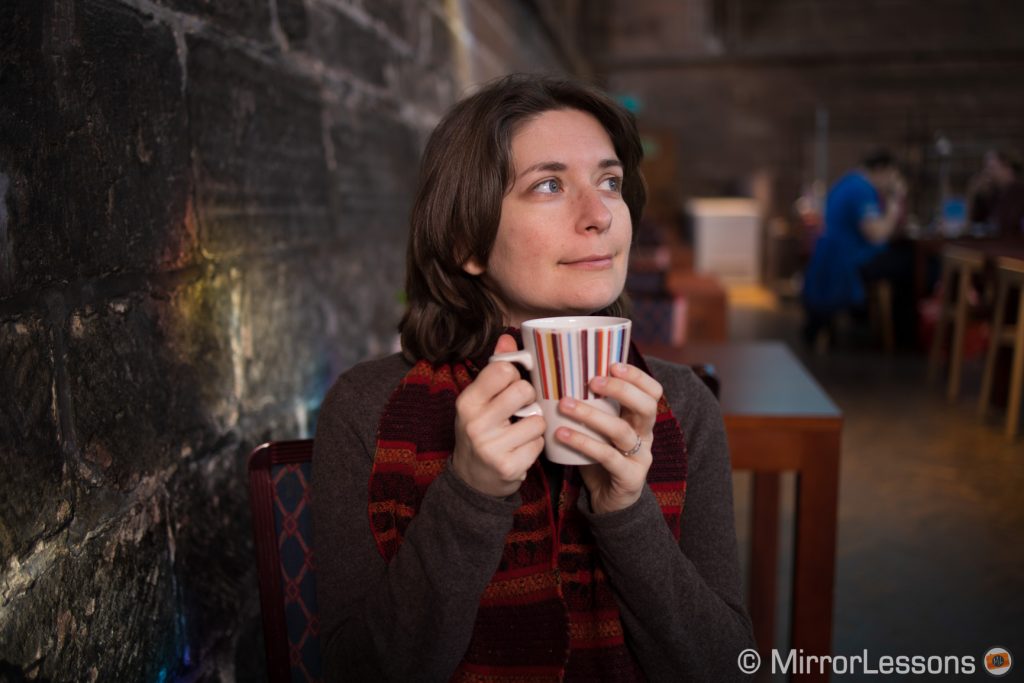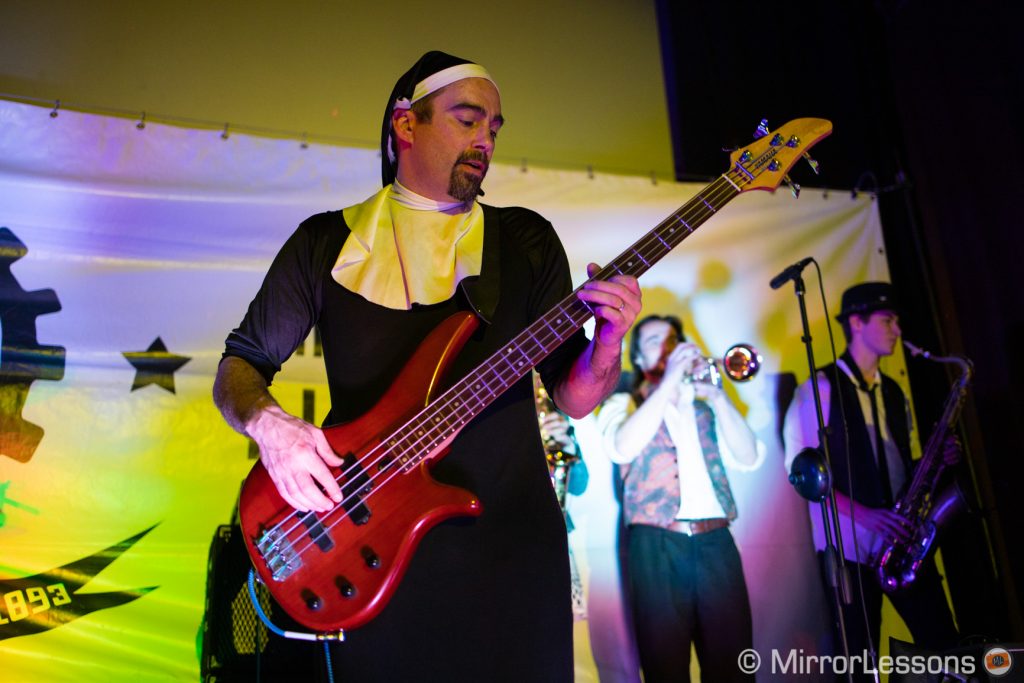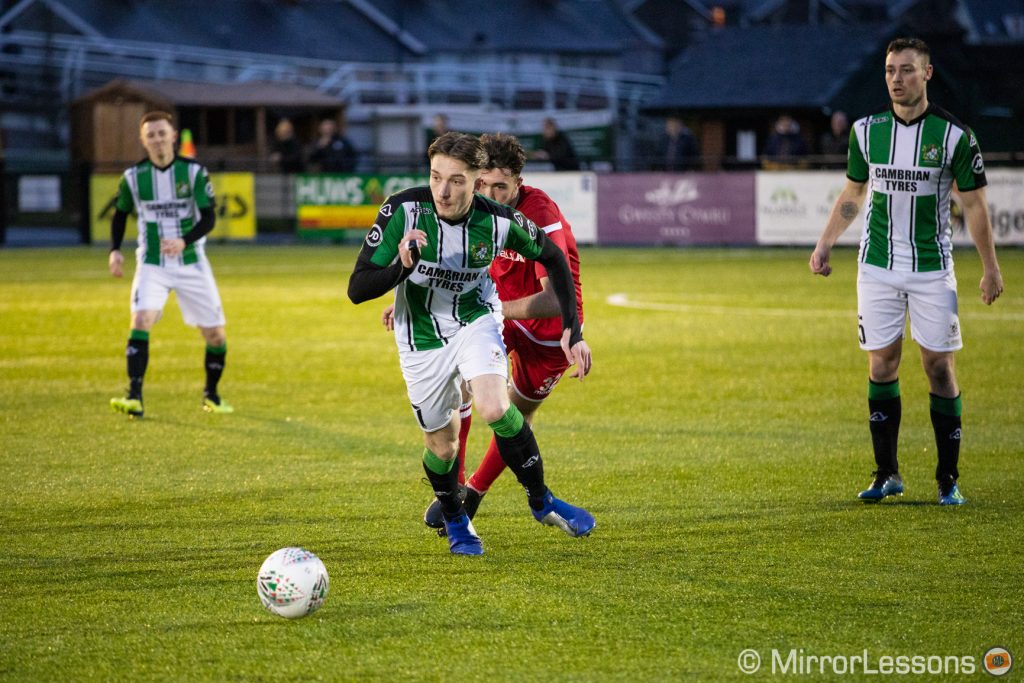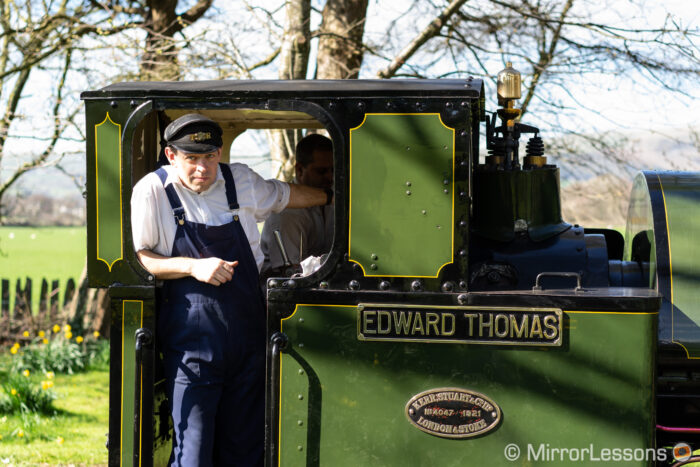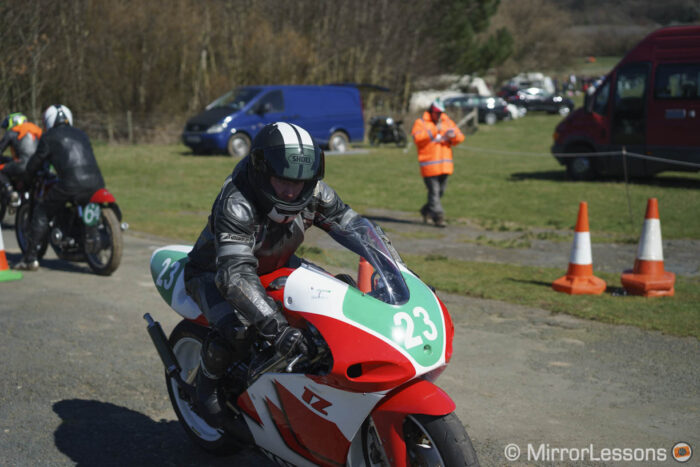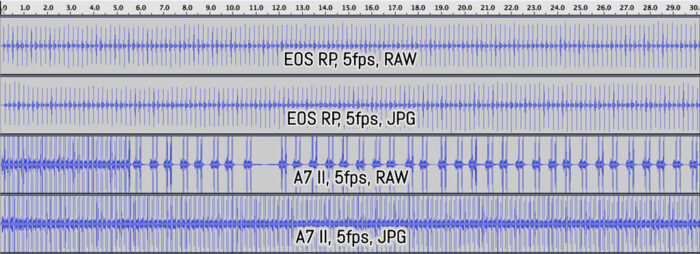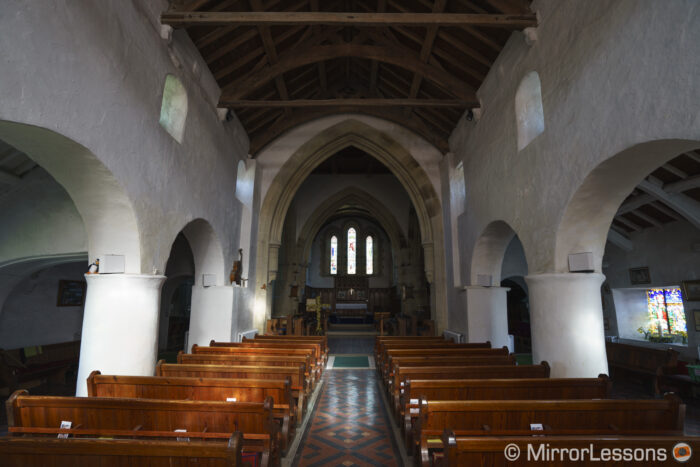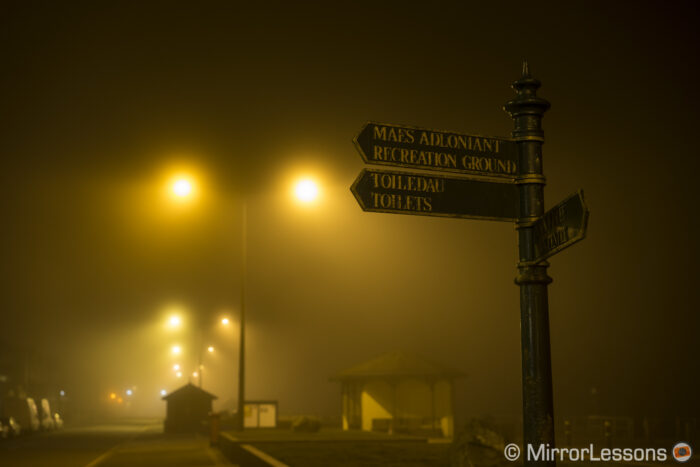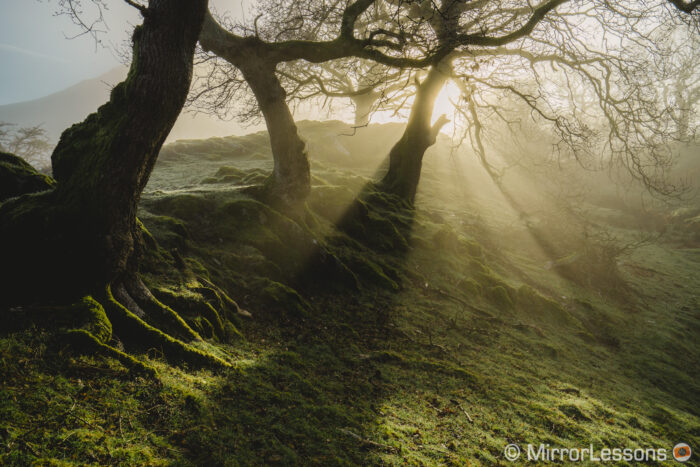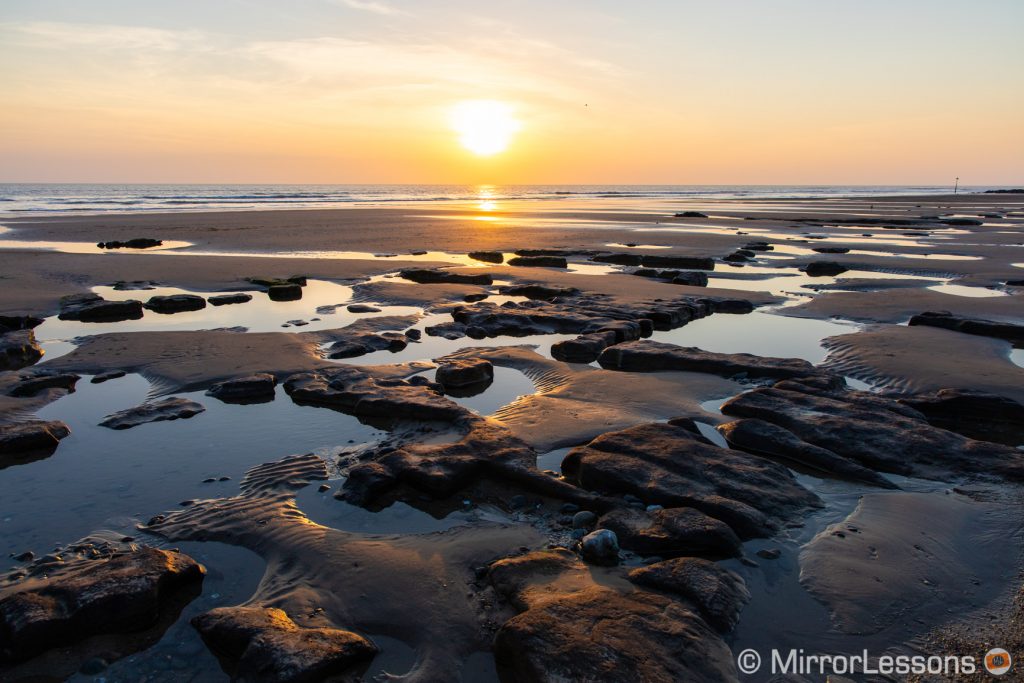Over the years we’ve seen a progressive decrease in the price of full frame cameras. Following the first double-grip bodies released in early 2000 that cost in excess of $5k, Canon introduced the first serious price drop with the original 5D which was launched at around $3300. Lower end models such as the Nikon D600 and Canon 6D followed later, bringing the average price down to the $2000 mark.
This year, Canon has pushed the price down further by introducing the EOS RP to the mirrorless segment, but they aren’t the only ones ready to play the affordable camera card.
Sony, the brand that first used a 35mm format sensor inside a mirrorless product, has opted to keep its older models on the market and reduce the price to make them an attractive proposition for those on a budget. The original A7 is still available, as is the A7 mark II.
The latter is the most natural competitor for the EOS RP. Here we take a look at both cameras to see which one comes out on top.
Ethics statement: We own the EOS RP and tested the A7 II four years ago. We rented the Sony again to see how it compares to the Canon in order to produce this article. We were not asked to write anything about these products, nor were we provided any other compensation of any kind. Within the article, there are affiliate links. If you buy something after clicking one of these links, we will receive a small commission. To know more about our ethics, you can visit our full disclosure page. Thank you!
Table of contents
Main Specs
1. Design and functionality
2. Image quality
3. Autofocus and speed
4. Image stabilisation
5. Video
Conclusion
Additional links and images
Mains specs
EOS RP
A7 II
- Sensor: 26.2MP 35mm format CMOS
- Lens system: RF-mount
- Weatherproof: Yes
- Internal Stabilisation: None
- Autofocus: Dual Pixel CMOS AF with 4,779 points
- Continuous shooting: 5fps in S-AF, 4fps in C-AF (servo)
- ISO Sensitivity: 100 – 40000 ISO (pull 50, push up to 204800)
- Shutter Speeds: 1/4000s to 30s, Bulb
- Viewfinder: 0.39in OLED with 2,360k dots, 22mm eye point, 0.7x magnification and 60Hz refresh rate
- Rear monitor: Multi-angle 3.00” LCD (1.04M dots) with touch sensitivity
- Movie recording: 4K up to 25fps and 120Mbps, Full HD up to 60fps,
- Built-in Flash: No
- Extra Features: WiFi, Bluetooth, Interval-timer, 4K Time-lapse video, Focus Bracketing, Tethering
- Dimensions: 132.5 x 85 x 70mm
- Weight: 485g (including battery and memory card)
- Firmware version: 1.6.0
- Sensor: 24.3MP 35mm format Exmor CMOS
- Lens system: E-mount
- Weatherproof: Yes
- Internal Stabilisation: Yes (5-axis)
- Autofocus: Hybrid with 117 phase and 25 contrast detection points
- Continuous shooting: 5fps with AE/AF Tracking
- ISO Sensitivity: 100 – 25600 ISO (pull 50)
- Shutter Speeds: 1/8000 to 30s, Bulb
- Viewfinder: 0.5in OLED with 2,359k dots, 22mm eye point, 0.71x magnification and 60Hz refresh rate
- Rear monitor: Tilting 3″ LCD (1.2M dots)
- Movie recording: Full HD up to 60fps, S-Log2 gamma
- Built-in Flash: No
- Extra Features: WiFi, NFC, Bracketing, Tethering
- Dimensions: 126.9 x 95.7 x 59.7mm
- Weight: 599g (including battery and memory card)
- Firmware version: 4.01
1. Design and functionality
The EOS RP and A7 II are reasonably compact and feature a weather-sealed construction, although neither is as well-sealed as some of the higher end products. They both feel well built but their respective designs differ in some key ways.

The EOS RP is as user-friendly as a camera can get
The Canon has more comfortable ergonomics. The grip is taller and there is more space for your fingers to rest between the grip and the mount. The A7 II is four years old but the design isn’t too dissimilar from the current mark III generation. The grip is a bit too small and not very comfortable when using large lenses.

The buttons on the RP model are softer to press and give you better tactile feedback. The shutter button on the A7 II feels a bit looser in comparison to the Canon.
The EOS RP has a 4-way rounded pad on the rear that is much more precise to use than the control wheel on the back of the A7 II. The latter moves too freely and you often have to go back to the value you just skimmed past.
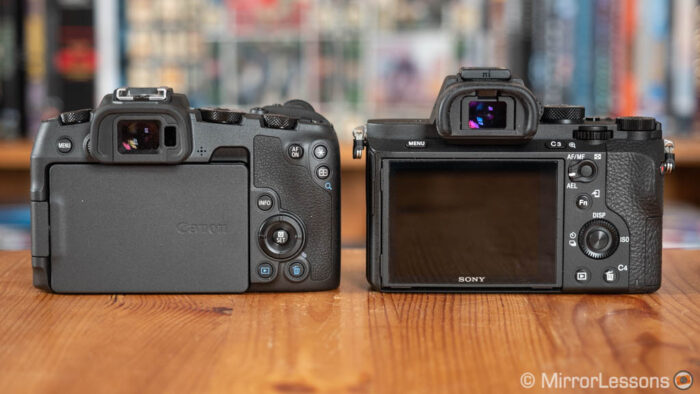
I also dislike the position of the video recording button on the Sony. It is found on the top of the thumb grip and you can never be quite sure if you’ve pressed it hard enough or not.
They both feature a shooting mode dial on top and twin dials to control shutter speed and aperture. The Sony has an additional exposure compensation dial.
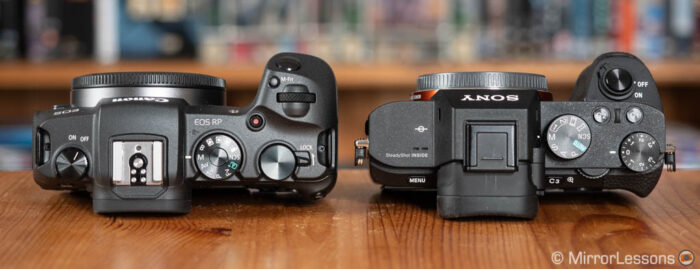
Both cameras feature 10 custom buttons. On the RP model you can customise the control ring of RF lenses, whereas on the A7 II you can assign a function to the rear wheel rotation and to the focus hold button of select E-mount lenses.
The main menu interface of the EOS RP is the most straightforward you can find on a mirrorless camera. The A7 II menu system on the other hand is quite confusing and disorganised.
Unlike the Canon, the Sony model allows you to customise the Fn menu as well (quick menu). However the RP has a My Menu page where you can shortcut your favourite settings.
Multi-angle mechanism and touch sensitivity on the EOS RP
One big advantage of the Canon concerns the rear LCD monitor. It has a multi-angle mechanism which means that it can be opened to the side and rotated 180˚ whereas the one on the A7 II tilts up and down only.
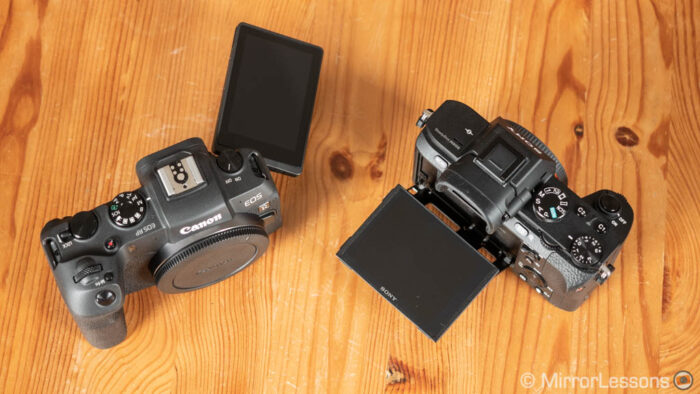
Secondly, the Canon LCD screen is touch sensitive. It is very reactive and you can do many things such as navigating the menu, which I do on a regular basis.
The A7 II screen has a bit more resolution but when working in video mode the live view drops considerably and makes manual focusing more difficult because of the lack of details (this happens in the EVF too).
One piece of advice I’d give you if you choose the Sony is to invest in a screen protector. The LCD coating of older Sony models often comes off with extensive use.
The A7 mark II has a larger viewfinder than the EOS RP (0.5-in vs 0.39-in) but the magnification factor is very similar (0.71x on the Sony and 0.7x on the Canon). The resolution is the same (2.36M dots) and so is the 22mm eye point which is decent for someone wearing glasses.
The refresh rate of the live view is around 60Hz for both cameras. The Canon has an annoying lag however: after taking a picture, the image freezes momentarily.
Battery life: the A7 II is worse but has more options
The two cameras use a similar battery in terms of overall capacity (1040-1080mAh) but the EOS R does a better job of making the battery last longer. The A7 II drops more rapidly.
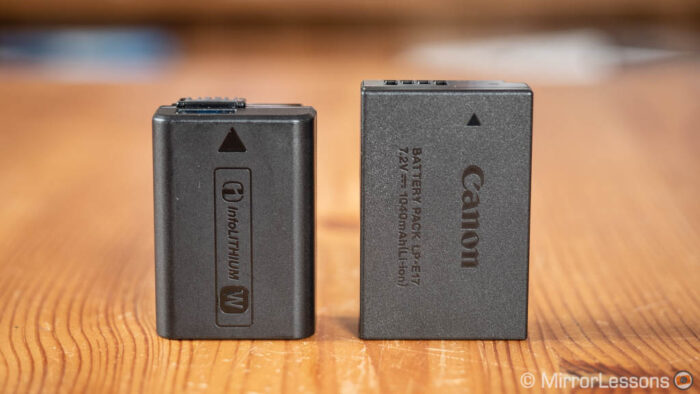
The Sony comes without a battery charger so unless you buy the official or third-party version, you have to connect the camera to the power outlet directly.
Both cameras can be charged via USB but keep in mind that not every power bank works on the EOS RP.
The A7 II is the only model here with an optional battery grip available (from Sony or a third-party brand such as Meike).
You’ll find one slot for SD cards on each model. The one on the Canon is compatible with the faster UHS-II standard. The A7 II has a dedicated compartment on the side whereas on the RP you need to open the battery hatch at the bottom to access it.
Finally, both cameras have a 3.5mm mic input and headphone output. The EOS RP has a 2.5mm remote input, USB 3 Type C and HDMI Mini Type C ports. The A7 II has a micro USB 2.0 and micro HDMI connections.
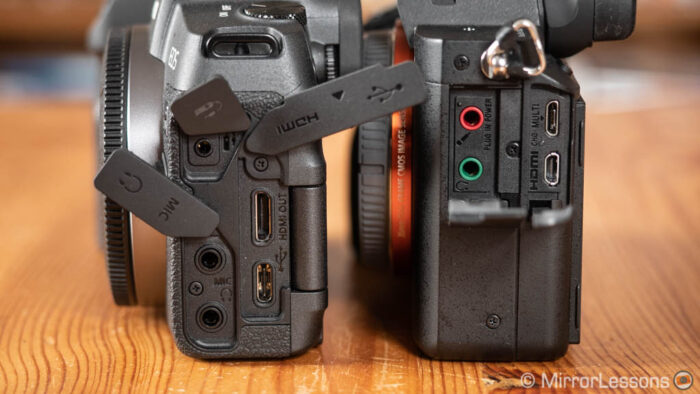
2. Image quality
Both cameras feature a 35mm format sensor. The EOS RP has slightly more megapixels at 26.2MP versus the 24.3MP found on the Sony chip. They both have a low pass filter.
The Sony sensor is older: the camera was released in late 2014 and it is a marginally enhanced version of the original A7 sensor released one year before. The sensor of the EOS RP is the same as the one found on the 6D mark II launched in 2017.
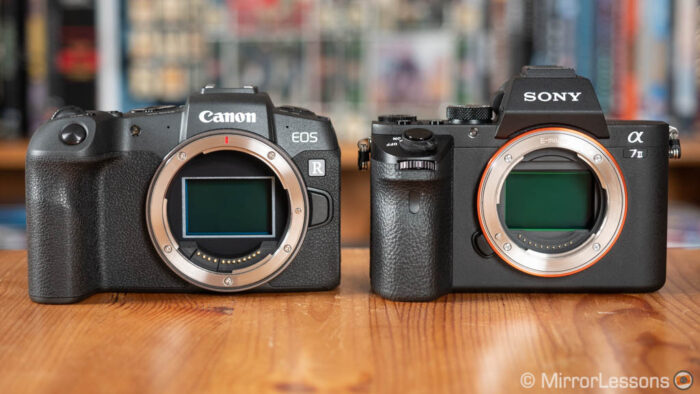
Dynamic range: the A7 II older sensor still has plenty
Despite being older, the Sony sensor performs better in a key area such as dynamic range.
In our first example, I’ve recovered a scene underexposed by approximately 2 stops. The EOS RP file displays more noise in the shadows, whereas the A7 II image is clean.
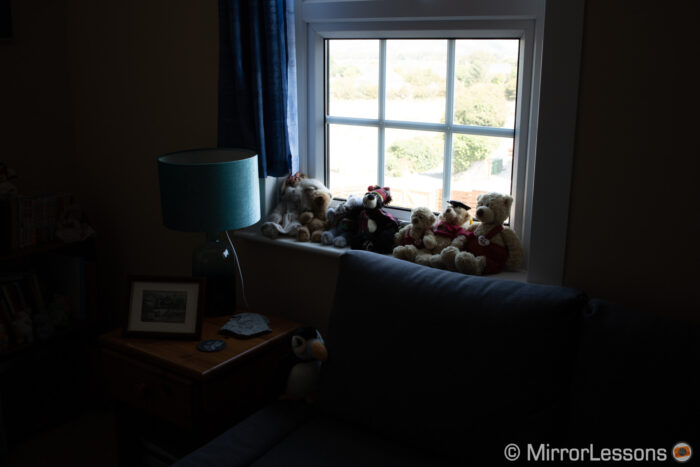
If I push the recovery further to +3 stops as in our second example, the Canon shows colour banding in addition to invasive colour noise whereas the Sony remains very usable.
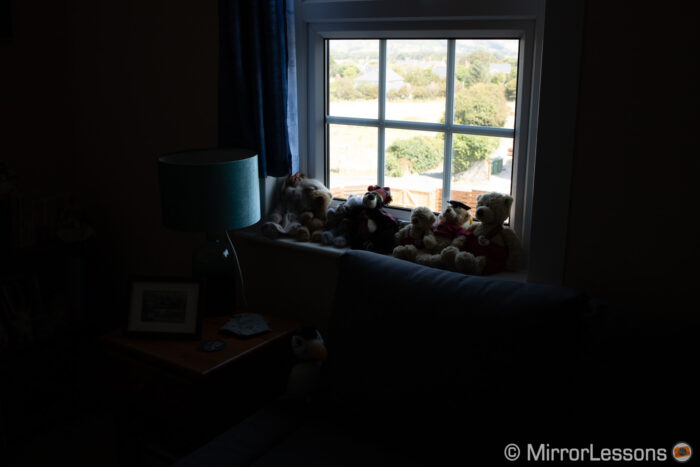
A four stop recovery is clearly too much for the RP file as shown in our third example. The Sony shows signs of deterioration in some areas but it’s not nearly as bad as the Canon.
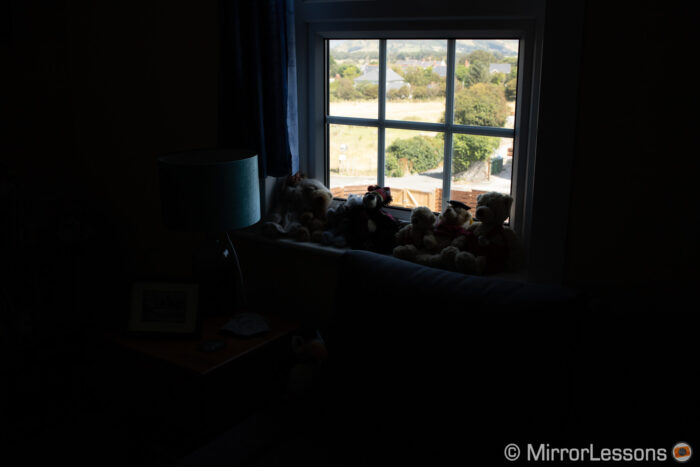
Concerning highlight recovery, they both deliver similar results.
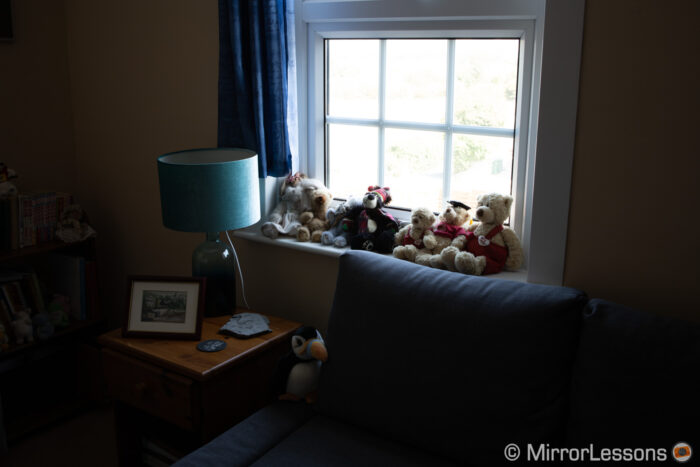
Sensitivity and colours: the EOS RP fights back
The sensitivity range of the Canon goes from ISO 100 to ISO 40,000. Extended values go down to ISO 50 and up to ISO 102400 (H2).
The A7 II has a more modest range of ISO 100 to 25600 with pull values down to ISO 50.
The performance of the two cameras is similar up to 1600 ISO.
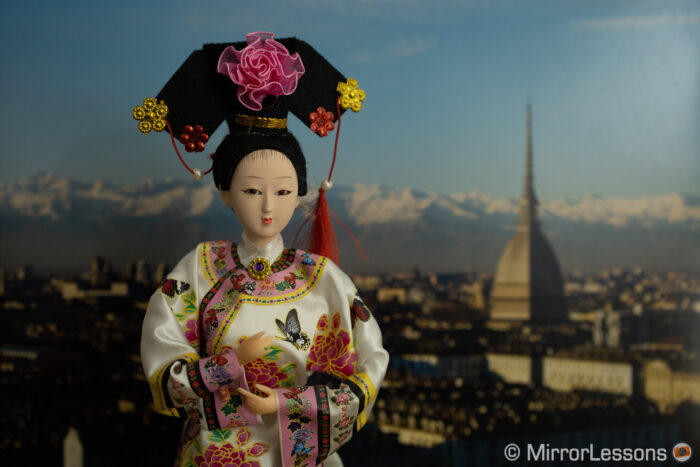
From 3200, we start to notice more noise on the A7 II and the gap remains constant up to 25600 which I consider to be the last useable value of the Canon (I would stay below it with the Sony).
The RP has two extra values, H1 and H2 (51200 and 102400 ISO respectively) but the quality really deteriorates at that point.
If we analyse the SOOC JPGs and the built-in picture styles of each camera (called Creative Styles on the A7 II), I prefer the balanced and natural colour rendering of the Canon. The Sony image has some green dominance, and more contrast and saturation which is especially visible in the Landscape profile.
The EOS RP has a total of six profiles whereas the A7 II has 13 styles which means that there is room to find one that suits your tastes better. You can also tweak the colours with WB adjustments, but straight out of the box, I find that the EOS RP gives better looking results.
The difference is more striking with skin tones. Using the same manual white balance temperature, the Sony has a yellow dominance which becomes evident with the Portrait profile.
If you want more control over your image, you can use the RAW files and your favourite image processor. In Lightroom, the Sony image doesn’t have the same green dominance found in the JPGs. They appear a bit more saturated by default but of course there are lots of adjustment you can make from here.
Additional information about image quality
- High ISO Noise Reduction: is controlled in three steps on the A7 and four on the RP. It is effective for the SOOC JPGs. Both have a Multi-Shot mode to further reduce the noise (JPG only)
- Metering: 4 settings on the RP, 3 on the A7 II
- Auto White Balance: you can choose between Ambience and White priority on the Canon
3. Autofocus and speed
Both cameras use a hybrid autofocus system that includes phase detection points, but the EOS RP’s is more advanced.
The Dual Pixel CMOS AF system on the Canon works with 4,779 points that are distributed across almost the entire sensor area (88% width, 100% height).
The Sony uses 117 phase and 25 contrast detection points. The phase difference points cover a smaller area of the sensor. This means that if the subject you are tracking goes outside of that area, the camera has to switch to contrast detection which is less effective.
The EOS RP has a better minimum sensitivity: -5Ev with an f1.2 lens (-3.5Ev at f2) whereas the A7 II goes down to -1Ev with an f2 aperture.
Overall, I find the EOS RP faster and more accurate thanks to the more advanced AF system. Face and eye detection are more reactive, and it works well in low light and with adapted EF lenses. The only limit is the camera’s processing speed which sometimes doesn’t feel reactive enough to take full advantage of the Dual Pixel CMOS AF technology.
The A7 II uses an older AF system that is not as fast as more recent E-mount cameras. It’s not bad by any means and you can bring home good results, but the performance is slower in Single mode because the camera often prioritises contrast detection.
In C-AF, phase detection is used all the time but you can often end up with several out of focus shots. Face detection is not bad but Eye AF works in S-AF only.
Both models can shoot continuously at 5fps, but if you want focus priority on the EOS RP, the speed is slightly lower at 4fps.
The Canon accepts UHS-II SD which have a faster writing speed and therefore help the camera buffer: it never decreases whether you shoot RAW or JPGs. The A7 II slows down after about 5fps when using RAW, but not when shooting JPGs.
Additional information about autofocus and speed
- Shutter speed: the Canon goes up to 1/4000s which is one stop slower than the A7 II (1/8000s)
- Shutter modes: the Sony has an electronic front curtain mode but no silent/full electronic option unlike the EOS RP.
4. Image stabilisation
The Sony A7 II is the first E-mount camera, and the first full frame model, to feature 5-axis in-body image stabilisation. The camera works on five axes (X, Y, Yaw, Pitch and Roll) to compensate for movements.
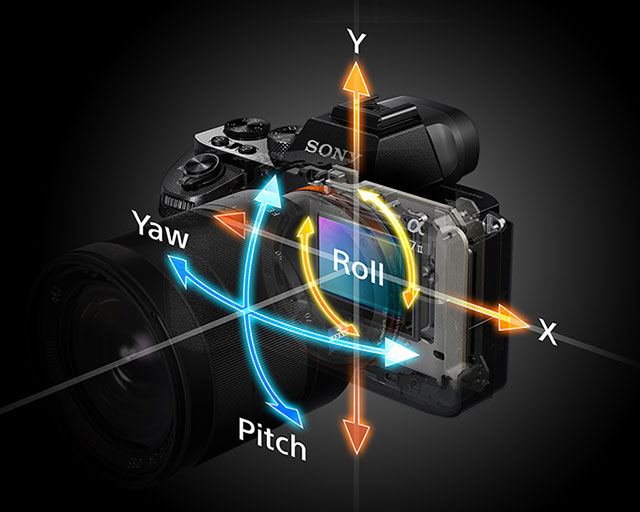
When an OIS lens is attached, the A7 Mark II combines the X, Y and roll axes of the sensor with optical stabilisation (yaw and pitch).
If you adapt a vintage lens that doesn’t have electronic contacts, three axes can still be used on the sensor (you have to input the focal length manually in the Steadyshot settings).
When I reviewed the A7 II four years ago, I managed to take shots down to 0.5s hand-held with relative ease. Of course multiple attempts were required but I got this kind of result with different lenses. I even managed to push it down to 1s with the 16-35mm f4 ZA at 16mm, although that becomes more difficult to achieve.
What’s interesting to note is that since then I haven’t seen a significant improvement in IBIS on more recent Sony E-mount cameras. Somehow the performance is stuck at the same level.
The EOS RP doesn’t have in-body stabilisation so you have to use a lens with optical stabilisation. You can push the RF 24-105mm f4 IS to about half a second but you’ll get a better keeper rate from 1/4s and faster.
5. Video
The EOS RP is the only camera here that can record 4K video whereas in Full HD, they go up to 60fps. In the quick video below, I compare the 1080p performance and the main features. Scroll down for a summary list.
Things they have in common
- 1080p recording up to 60fps
- mic input and headphone output (3.5mm)
Big differences
- the EOS RP can record 4K up to 25fps (but with a big 1.75x crop and no phase detection AF)
- 1080p footage is sharper on the Canon
- the RP is faster in continuous AF and with face detection
- the RP can use eye detection
- the S-Log2 gamma on the Sony gives you more dynamic range
- the A7 II in-body stabilisation works for video too
- the EOS RP can combine electronic stabilisation with select OSS lenses
Small differences
- the bitrate in 1080p is slightly higher for the Canon (60Mbps vs 50Mbps)
- I find the RP colours more balanced and natural, but the A7 II offers more image settings thanks to the Picture Profiles
- the Sony has a bit more noise at high ISOs (past 3200 especially)
Conclusion – Canon EOS RP vs Sony A7 II: which one to get?
The Canon EOS RP feels like a more well-rounded product for multiple reasons. It has a better design and is much more intuitive to use. The colours are natural and the high ISO performance is solid. You’ll find extra features such as Wifi, Bluetooth, Time-lapse, Focus Bracketing and tethering. If you’re looking for your first serious camera, or if you simply want something that is easy to use and gives you good quality for stills and video, the EOS RP is the right choice.
That being said, the Sony A7 mark II retains some advantages that shouldn’t be overlooked. If you’re interested in post processing, the RAW files have more flexibility when it comes to dynamic range. There is 5-axis stabilisation that works with any lens, including old manual focus lenses. There are fewer built-in extra features in comparison to the Canon, but you can add more via the Playmemories app store (keep in mind they’re not all free).
But perhaps the most important factor to consider is the lens selection. Sony started its full frame mirrorless system earlier than Canon and now offers more choice. You’ll find lenses for every taste and budget, and the system is growing quickly thanks to the support of third party brands.
The Canon RF system is new so we need to give it time to grow. At the moment, there aren’t a lot of native lenses that really fit a camera like the EOS RP both in terms of size and price. Products such as the 28-70mm f2, 50mm 1.2 and 85mm 1.2 are spectacular but also large, heavy and very expensive.
My favourite lens for now is the RF 35mm 1.8 which has an affordable price and good optical quality, although the AF motor is a bit slow. The only “kit lens” you’ll find is the 24-105mm f4 which is not cheap. By comparison, Sony offers a FE 28-70mm which may not be spectacular but will only slightly increase the camera’s price.
Of course you can adapt lenses, and Canon includes the RF to EF adapter in the box in many countries. That said, you can adapt lenses on the A7 II too. Granted, the AF performance isn’t as fast as with the Canon, but it remains a well known possibility among Sony users. But adapting lenses isn’t a solution that everybody will be interested in.
Finally, there is the price which is another advantage the A7 II has over the Canon. The camera is often found for around $1000 which makes it about $300 cheaper. (The same is valid in European countries)
Strengths of the Canon EOS RP:
- grip and ergonomics
- ease of use (button layout, interface, touch screen)
- LCD can be rotated 180˚
- faster and more precise AF performance
- more accurate colour profiles
- sharper footage in 1080p
Strengths of the Sony A7 II:
- dynamic range
- in-body 5-axis stabilisation
- 1/8000s shutter speed
- more picture settings for video
- vast choice of native lenses
- less expensive
To consider:
- the EOS RP records 4K video but with a strong 1.75x crop
Choose the Canon EOS RP if:
- you want an easy and intuitive camera to use
- you want good image and video quality without spending too much time in post production
- you want faster and more accurate AF performance
Choose the Sony A7 II if:
- you want more dynamic range for post processing work
- you want image stabilisation with any lens
- you want a larger selection of native lenses
Reminder: the links below are affiliate links. If you decided to buy something after clicking the link, we will receive a small commission.
Check price of the Canon EOS RP on
Amazon | Amazon UK | B&H Photo | eBay
Check price of the Sony A7 II on
Amazon | Amazon UK | B&H Photo | eBay
Second-hand Canon gear on
MPB US | MPB UK
Second-hand Sony gear on
MPB US | MPB UK
Additional gear and links
Below you can read some quick thoughts about the lenses we used for each camera. Unfortunately I didn’t have time to use the A7 II with telephoto lenses.
Canon RF and EF lenses
- Canon RF 24-105mm f4 IS USM: it is the only “kit lens” you can buy at the moment. The optical quality is really good when it comes to sharpness, the bokeh is decent and it has a useful zoom range. It feels a bit big and heavy on the EOS RP but the optional EG-E1 hand-grip might help. (Check price on B&H Photo)
- Canon RF 35mm f1.8 Macro IS STM: it is the only affordable lens at the moment. You get great optical quality and some semi macro capabilities, but the AF motor is a bit slow. (Check price on B&H Photo)
- Canon EF 70-200mm f4 IS II USM: it is a compact zoom lens and fits the small EOS RP very well. The AF motor is fast and works very well with the RF to EF adapter. Sharpness is very good at f4. (Check price on B&H Photo)
Sony FE lenses
- Sony FE 16-35mm f4 ZA OSS: it is a good wide angle zoom lens with excellent sharpness at the centre. Corners are not as good but remain decent. The performance decreases a little bit at 35mm. (check price on B&H Photo)
- Sony FE 35mm f2.8 ZA: it is too expensive for what it its, but if you find it second hand at a good price, then it’s an interesting lens to have because it is so compact and delivers good quality. There is also a Samyang equivalent to consider (check our comparison here). (check price on B&H Photo)
- Sony FE 55mm f1.8 ZA: it is one of my favourite lenses and one I have used since buying the first A7 in late 2013. It continues to surprise me today: great sharpness, bokeh and fast AF motor. It is compact and despite being a bit expensive, it is worth every penny. (check price on B&H Photo)
You can check out additional sample images taken with the two cameras by following the links below:
You may also be interested in the following articles:

